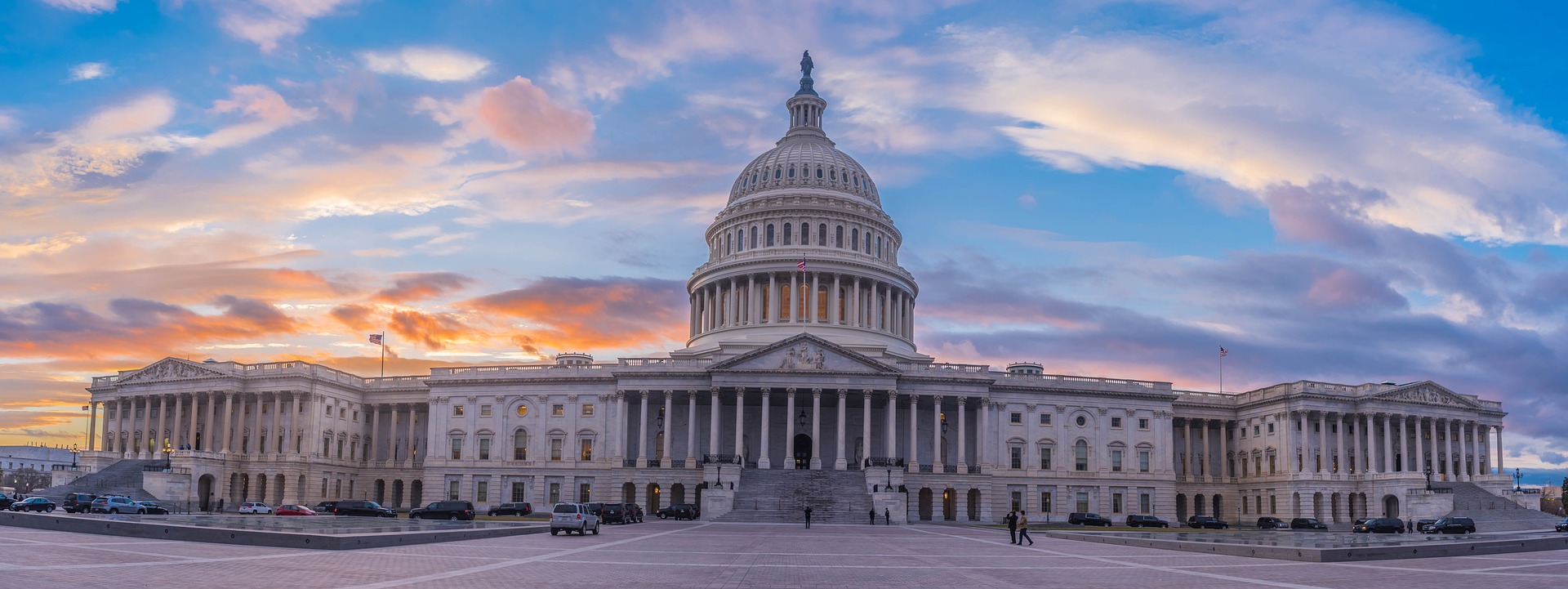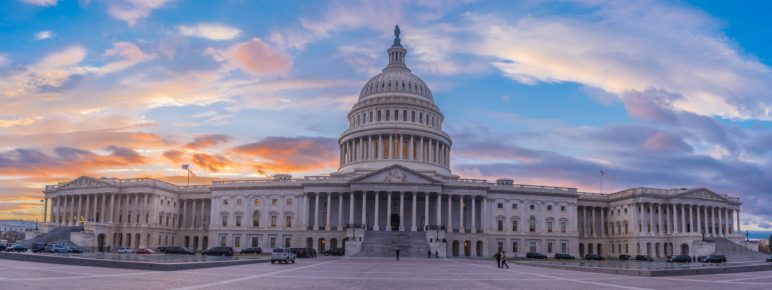Top Takeaways:
COVID-19 has made the long-existing housing crisis a full blown emergency, and renters are hit the hardest. It’s time for bold federal-level action to:
Make Section 8 a permanent, automatic entitlement.
Shift to cash benefits rather than micromanaging people.
Reserve federal funding for communities doing their part to alleviate the crisis by legalizing abundant housing (and withhold it from cities that keep exclusionary zoning rules).
Even before the pandemic shuttered its economy, Cascadia—like many parts of North America—faced a profound housing shortage and affordability crisis. Now, that crisis has become a full-blown emergency.
Unemployment is surging toward Great Depression levels, economic output is falling faster than any time in modern history, and the share of tenants failing to pay April rent has already spiked. And, in the most extreme version of personal housing crisis—homelessness—you can’t shelter in place if you don’t have a place to shelter in. There’s never been a more urgent moment for big, bold, public action on housing.
There’s never been a more urgent moment for big, bold, public action on housing.

And the only institutions that can go big and bold enough in this coronavirus housing emergency are national governments. The US government can do that in two ways. (Apologies to Sightline’s Canadian readers; we’ll have more to say about the situation north of the 49th parallel another day.)
First, the US Congress can put public funds toward direct financial support for those who are most vulnerable to losing their homes right when they need those homes the most: renters. It can give renters enough to keep them stably housed, and it can continue giving it to them until their earnings recover. The payments would not only protect tenants; they would also deliver badly needed economic stimulus and keep supply chains for essentials like food strong for everyone.
Second, the federal government can withhold public investment money from cities that continue to impose zoning laws that reserve close-in neighborhoods near jobs and transit only for the most expensive homes, pushing lower income workers out to the margins. Federal leverage to allow more homes like rowhouses, apartments, and granny flats would get at the root cause of ballooning rents and expand opportunities for people to live near jobs and amenities.
The first policy benefits from the second in a key way. In communities that zone out everything but stand-alone houses on big lots—that is, where it’s near impossible to add homes—putting more money in people’s pockets to pay for housing will keep average rents higher, which works against all renters. It’s unavoidable when more dollars chase a fixed supply of housing. And that’s where lifting bans on modest, compact homes comes in: the dollars flowing to rental assistance can then spark homebuilding, increasing housing options and taming rents.
The two policies work together, each necessary but insufficient. Legalizing multiple-dwelling homes like triplexes, townhouses, and stacked flats will help keep rents under control, but it won’t fully serve those who need better housing most. And subsidizing rents for those who need it most without allowing more homes would guarantee stability for no one except landlords cashing in on scarcity.
Given realistic timing for a vaccine, the pandemic itself will be with us for at least another year, while its economic wreckage may persist years longer. The near-term threat of coronavirus and its potential for resurgence calls for a rapid response to get people stably housed. The longer-term economic downturn calls for sustained, broad support for renters. The US government has unmatched power to do both with a paired strategy to make housing subsidized for many and abundant for everyone.
And this moment is a teachable one. More people are in crisis now, but many face devastating housing insecurity in normal times. The solutions we need now have a place in the future too.
Renter assistance: subsidized housing for those in greatest need
Nearly one in six US workers filed new unemployment claims in the past five weeks. And that stunning figure is likely an undercount because of processing delays, and because not all those who’ve lost work are eligible. In Washington state, officials expect the unemployment rate to surpass 20 percent by next week.
The economic devastation is only getting started. Millions will struggle to stay afloat for months and possibly years. But the crisis poses an especially dire threat to renters.
Compared with homeowners, on average renters lag on every measure of economic well-being, plus they’re more likely to have the kinds of service jobs that have disappeared overnight. Before the coronavirus hit, a quarter of US tenants spent more than half of their income on rent, and one in five said they couldn’t come up with $400 to cover an emergency.
To protect renters, federal, state, and local governments have taken rapid, unprecedented action to enact eviction bans in Cascadia and beyond. But while halting evictions helps tenants in the near term, it only delays the pain. The unpaid rent piles up and comes due eventually.
The simplest, most effective way governments can prevent widespread renter apocalypse is to give money to tenants in need so they can pay the rent. Just like Food Stamps, housing subsidies should be immediately available to all who qualify.
Whether they take the form of cash payments, a renters’ tax credit, or expansion of the current federal voucher system, universal housing subsidies are essential to national prosperity. Poor Americans, and the rest of our society, pay for the consequences of their unstable housing for the rest of their lives.
The federal budget can handle the cost—plus it’s stimulus
For the scale of funding required, forget about local and state governments. The shutdown has massacred their tax revenues, and legally, they can rarely and only briefly spend more than they take in. But the federal government doesn’t have that constraint, and taking advantage of it is exactly what most economists now prescribe: massive deficit spending as life support for an economy in a coma.
So far, Congress has passed the $2.2 trillion CARES Act in March, and $484 billion of relief focused on small businesses in April, but neither provides support specifically for renters. More relief legislation can be expected through the end of the year, if not longer, presenting opportunities to enact new renter assistance.
In 2017, America’s 44 million renter households paid $485 billion in rent, an average of $919 per month. If we assume that in the current crisis one in three needs rental assistance of $1,000 per month, a year of support would cost $176 billion.
For comparison, the CARES Act just spent $290 billion for stimulus checks and $260 billion for unemployment benefits. Meanwhile, each year the federal government subsidizes the nation’s 33 million homeowners by some $140 billion through the mortgage interest deduction, property tax exemption, and capital gains exclusion.
The simplest path: make housing vouchers an entitlement
The US government’s most direct path to expanding renter assistance is through the existing Housing Choice Vouchers program (also known by its persistent former name, Section 8). Households that earn less than 50 percent of the local median income can qualify for vouchers sized to guarantee that they can pay the uncovered portion of the rent without being “cost burdened” (defined as spending more than 30 percent of income on housing).
Underfunding severely limits the program’s reach, however. With an annual budget of $20 billion, the program serves about two million households, but that’s only about a fourth of those that qualify. Waiting lists stretch for years and are often closed.
The fix is to make vouchers an entitlement, meaning everyone who’s eligible can get support. Stability is baked in because funding for entitlements, like Food Stamps, Social Security, Medicare, and Medicaid, automatically expands to cover all who qualify without requiring Congress to appropriate spending every year.
It’s not a new idea. And the worsening housing crisis has deepened its traction, landing it in Joe Biden’s housing plan: “The Section 8 rental housing assistance program should be fully funded so that everyone eligible gets the assistance they need to pay their rent for a safe home.” (Note that unlike an entitlement, a “fully funded” program still requires Congressional approval every budget cycle. It’s unclear whether Biden’s plan lacks that specificity purposely or through oversight.)
Housing Choice Vouchers currently serve one in 22 of total rental households, at an average cost of about $800 per month each. Pre-coronavirus, a switch to entitlement would have roughly quadrupled the recipients in the program, raising the cost to $80 billion per year. In the current shutdown, the need is far greater. The $176 billion crisis-level guesstimate I made above would serve about seven times as many households and raise the average monthly payment to $1,000.
Other policy solutions for renter assistance
Housing Choice Vouchers are administered by local housing authorities that make the payments to landlords. Alternatively, the government can grant assistance as direct cash to qualified renters, who are then free to spend it on needs other than housing if they so choose.
As my Sightline colleagues Michael Anderson and Margaret Morales wrote, that flexibility gives recipients “full control of their budget and the ability to tailor spending to an infinite variety of circumstances,” while studies show that they “tend to use the money to build household assets, pursue additional education, and boost nutrition.”
Congress could convert the Housing Choice Voucher program to direct cash assistance by getting rid of the housing authority “middle man.” Income and local rents would determine the payment amount, which recipients could put toward the housing of their choice. Not only would that eliminate a layer of bureaucracy, but it would also solve the problem of some landlords refusing to accept vouchers—landlords wouldn’t have to deal with any red tape and wouldn’t even necessarily know a tenant was using public assistance for rent.
Renter’s Tax Credit
In 2016, UC Berkeley’s Terner Center put forth the idea of cash assistance in the form of a renter’s tax credit. In the most generous proposed scenario, the tax credit would cost an estimated $76 billion per year to support all cost-burdened renters earning less than 80 percent of area median income. It would provide 13.3 million households with an average subsidy of $457 per month. Joe Biden’s housing plan also calls for renter’s tax credit but would allocate only $5 billion for it.
Emergency Rental Assistance Act
In March, US Rep. Denny Heck introduced a bill to provide $100 billion of short-term renter assistance for households “impacted by COVID-19” that earn up to 80 percent of area median income. Funds would flow through the existing Emergency Solutions Grant Program to states, which then award grants to local governments, non-profits, and housing authorities. The wide variation of potentially funded entities in different states and cities makes it difficult to assess how it would play out. The bill did not make it into either of the first two big coronavirus stimulus packages.

Multi-dwelling homes like this fourplex in Seattle’s Fremont neighborhood are banned from most land in North American cities. Photo by Dan Bertolet.
The second key ingredient: federal leverage for abundant homes in all shapes and sizes
When more people want to live in a place, usually we build more homes there. After all, that’s why cities formed in the first place. But today in prosperous North American metros, local zoning laws put most land off limits to adding homes, preventing homebuilders from responding to demand, and sending rents and prices skyward.
For the better part of a century, the United States has zoned for sprawl. But that’s only hidden housing costs by pushing them into transportation, into lost sleep and family time wasted on megacommutes, and onto the backs of today’s young people by damaging our climate and public finances. And as bans on apartments, duplexes, and other modest and mid-priced housing types fueled sprawl, they also preserved and worsened racial and income segregation.
The Catch 22 is that in job-rich but zoning-constrained metros, guaranteeing rental assistance to low-income households could undermine its own intent by driving up rents even more. The public subsidy ends up in the pockets of landlords and owners—unless enough new homes are built to avert bidding wars.
In the near-term, if renter assistance is only backfilling what normally would have been paid by tenants, it won’t push up rents, though it could keep rents from dropping. Longer-term, ongoing assistance would lead to consumption of more housing when, for example, roommates leave shared rentals to live alone, grown children move out of their parents’ homes, or formerly homeless people move indoors. If the supply of homes can’t increase in response to that demand, rents will go up.
The public sector has little influence over many of the factors in housing production, but it does control zoning. However, politics and obstructionism almost always thwart local efforts to ease zoning lockdowns. California and Oregon recently passed state laws that supersede some local housing restrictions, but such statewide action is still rare.
Federal intervention has the potential to overcome the impasse and bring change at scale. But why would local governments conform? Money.
The federal government can withhold public money from jurisdictions that use exclusionary zoning to lock out new neighbors. This could include federal grants for transportation, housing, or community development, and perhaps even individual-level subsidies such as the home mortgage deduction.
Rewarding cities that welcome new neighbors: an idea that’s gaining steam
There is no enacted US precedent for this approach applied to local zoning, but the concept has been getting more attention. At the state level, California Gov. Gavin Newsom last year proposed withholding transportation funding from cities that fail to meet state-mandated housing goals, though the effort fizzled.
As for the federal level, Sightline’s Michael Andersen catalogued last year’s burst of proposals to tie federal funding to local housing barriers put forth both in bills by electeds, and in the campaign plans of presidential candidates.
The most aggressive bill was Rep. Alexandria Ocasio-Cortez’s “A Place to Prosper Act,” which would withhold federal highway funds from jurisdictions that prohibit multi-unit housing or mobile home parks, or that require off street parking or lot sizes larger than one-half acre. Two other bills introduced last year—the YIMBY Act and the Build More Housing Near Transit Act—are far less prescriptive, proposing only to add zoning-related grant evaluation criteria.
The now-defunct presidential campaigns of Senators Cory Booker, Elizabeth Warren, Amy Kloubuchar, Bernie Sanders, and former Housing and Urban Development Secretary Julian Castro, all included various ideas for using federal funding to reward abundant-housing policies.
Joe Biden is running with it—so far
Drawing from these efforts, Joe Biden’s housing plan calls for eliminating local and state housing regulations that (1) “keep people of color and low-income families out of certain communities,” and (2) “limit affordable housing options and contribute to urban sprawl,” adding that, “housing policy can be used as a tool to battle climate change.”
Modeling on Sen. Cory Booker’s HOME Act of 2019, the plan would make multiple funding sources contingent on local governments adopting inclusive zoning, including Community Development and Transportation Block Grants, investments in housing, and other grant programs. The plan lacks specific metrics for meeting the “inclusive zoning” requirement—and that’s bound to be a challenging component to get right in any of these schemes.
Biden’s plan would also fund local governments to pay for the planning work necessary to “eliminate exclusionary zoning policies.” That support may prove more important than it seems as cities and states deal with gaping budget holes. It could also help ensure that municipalities can plan carefully to protect low-income families and communities of color from displacement.
Withhold the mortgage interest deduction from housing obstructionists?
A particularly gnarly challenge with all of these proposals to deny federal funding is that many wealthy, exclusive cities may decide that they don’t need the money anyway. In which case some of the most egregious bastions of exclusionary zoning could go right on excluding. One way to avoid that outcome would be to condition funding to states on adoption of state laws to loosen zoning that supersede local restrictions.
Or, the US government could deny residents of exclusionary cities eligibility for the mortgage interest tax deduction: that would certainly get people’s attention. In 2016, the mortgage deduction was worth $65 billion, and 84 percent of the benefit went to households earning more than $100,000. If communities refuse to do their fair share about the housing emergency by allowing more homes, they do not deserve federal largesse.
A one-two punch
The coronavirus has brutally exposed Americans’ fragile hold on one of life’s basic necessities: a secure home. It’s been a worsening national crisis since the great recession, and it calls for an aggressive federal response—especially now.
Renters have been hit hardest, and the federal government can respond by targeting financial support for them. The best opportunity at the needed scale and speed is to make the Housing Choice Voucher program (a.k.a. Section 8) an entitlement so that any renter who qualifies can get support.
At the same time, the federal government can tackle one of the main reasons rents have risen so far out of reach: local zoning restrictions that block the creation of abundant housing options affordable to more families. And it can put teeth into that by withholding federal funding from communities that refuse to welcome new neighbors.
Together, these two strategies can turn around the coronavirus housing emergency, and set the course for long-term housing abundance and affordability.
This article reflects the work and ideas of the entire Sightline housing team: Michael Andersen, Anna Fahey, Nisma Gobobe, Margaret Morales, and Alan Durning—thank you all!











Jon Morgan
Section 8 vouchers; while necessary for short-term purposes, homelessness prevention, and people who are unduly burdened by having to move; are not the right long-term or broad-based solution. For one thing, they will only continue to push rents higher, necessitating their constant expansion. Higher rents do not lead to the construction of affordable housing, as the Seattle region has seen in the last decade. We’ve lost more than 50,000 affordable homes and already needed 176,000 new ones before the coronavirus. While we should upzone and increase housing production, the evidence shows that the resulting housing units produced are still very expensive. Real life just isn’t as simple or predictable as your Economics 101 textbook; reality is messy.
According to Stephen Norman, Executive Director of the King County Housing Authority, Public Housing costs 1/3 as much as Section 8 vouchers to house the same number of people. Public housing is the program that worked for decades until Reagan-era cuts created mass homelessness and 5-10 year waiting lists. Public housing is stable and permanent, and tenants’ rents are limited to 30% of their gross incomes. KCHA has 16,000 people on public housing wait lists for 3500 (already occupied) homes. That means we have a shortage of 16,000 homes, and that is only for the most severely suffering neighbors–people in homelessness, people paying the majority of their incomes (sometimes more than 100%) on rent, people living on $783/month SSI. (Note that the eligibility rules for public housing and Section 8 vouchers are the same) Furthermore, that excludes thousands of people who aren’t even eligible to APPLY for vouchers or public housing, since they are only open to senior citizens, families with children, and people with disabilities. Plenty of our homeless neighbors are neither seniors nor disabled.
So our shortage of affordable housing is truly massive, and just as with deficits and debt, it’s only the federal government that is equipped to fill the gap. Trusting the free market to provide the human right of housing makes no more sense than trusting the free market to provide the human rights of education, health care, or public safety. By now it should be abundantly clear that trickle-down economics, including trickle-down housing, simply do not work. We need the federal government to step up and build millions of public housing units across the country. They can do this–as they did before–where the private sector cannot. In fact, such an effort would provide badly needed jobs and economic stimulus. Granted, building millions of affordable homes can’t happen overnight, and that’s where the temporary, limited role of Section 8 vouchers comes in.
But if we actually believe homelessness is an emergency, and housing is a human right, it is far cheaper and more effective to build public housing and make housing not just a human right but a federal entitlement to everyone. Much as a public option in health care is intended to keep private insurers honest and costs down, we need public housing on a large enough scale to compete with private rentals on cost. Public housing can end homelessness–and will if we let it. The free market, with or without Section 8 vouchers, cannot. Let’s subsidize human rights; not profits.
Dan Bertolet
Thanks Jon. I agree with most of your points about social housing.
Two reasons we’re focused on renter assistance: (1) in the near term we need a rapid response, and (2) sufficiently funding social housing is a MUCH bigger political lift than renter assistance.
Your stat about public housing costing a third as much as Section 8 is surprising to me. Can you provide a citation or link?
One more thing: if you’re going to accuse people of Econ 101ism, then you should probably stop using the term “trickle down housing.”
chelsea lawson
some of that may work but saying to raise the monthyly payment 1000 to renters that are on section8 is not fair,,they are basing our rent on our income each month and what we are able to pay..i pay the top at 805 a month from my own money then my monthly bills are on average 600 to 800 then add on food and gas and its still a struggle at the end of the month and adding 200 dollars on to us already on it is not going to work. maybe have an emergency voucher for a couple of months or until they get jobs back but as a person that waited for 9 years on that list to get the voucher doesn’t seem fair to just all of a sudden you want it you got it scenario..and not to mention these people out of a job most likely are rentng a house that is way out of the payment standards for section 8 in calif try to find a 2 bedroom under 1800 or a 3 bedroom for under 2400 good luck. its not as though you are on section 8 and can go and rent any house because no there is a limit to how much rent ican be..they need to just issue and rent and mortgage freeze like other countries did until its under more control and relieve stress on everyone
Dave
Why not price controls or even hard, finite rent and price ceilings on property?